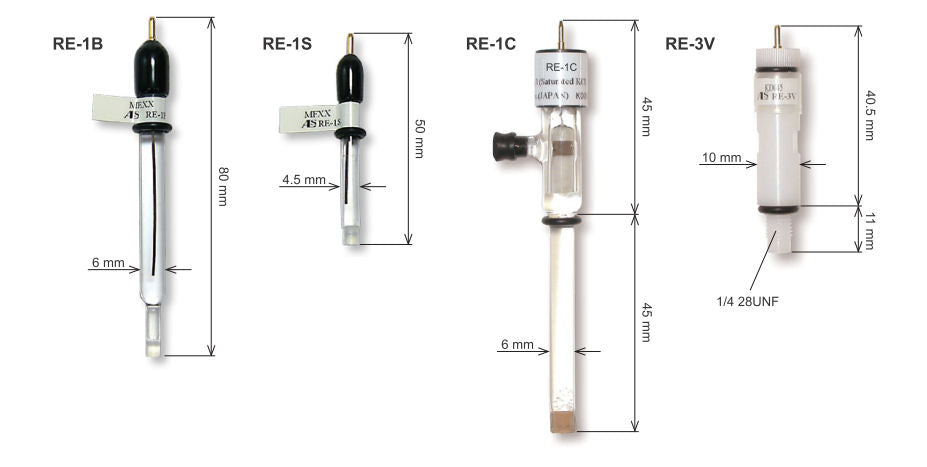
Different types of reference electrodes and their application
|
Time to read 2 min
|
Time to read 2 min
Reference electrodes are an essential component of electrochemical measurement, characterized by its stable and known reference potential. It serves as a stable reference potential for accurate measurement in wide range of electrochemical system.
Different types of reference electrodes are available, each with specific properties suitable for various electrochemical applications. In this article we discuss some of the common types and their uses:
SHE serves as a fundamental standard for measuring electrode potential as its own equilibrium potential value is accepted as 0 V.
SHE is characterized as an electrode where pure hydrogen gas is bubbled at 1 atmospheric pressure at 298K over a platinized platinum electrode immersed in a solution with H+ ions at unit activity, but it’s not the most practical choice for everyday application due to its requirement of continuous bubbling of H2 gas. Hence several alternative reference electrodes are used instead of SHE, among those the most widely used ones will be briefly discussed below:
Ag/AgCl electrode consists of a pure silver metal wire which is coated with a silver chloride layer. The electrode is immersed in saturated potassium chloride (KCl) solution.
The saturated calomel electrode consists of a Hg pool separated from potassium chloride solution saturated with mercurous chloride (Hg2Cl2) by a porous ceramic frit.
It is also one of the most commonly used reference electrode that provide stable and reproducible reference potential.
It is suitable for general analytical chemistry and corrosion studies.
The core of the Cu/CuSO4 electrode is typically a pure copper wire. The copper electrode is immersed in saturated solution of copper sulphate (CuSO4)
It is suitable for general electrochemical measurement, also used as ion selective electrode
It is also known as Clark electrode. This is recommended when chloride in the reference electrode is not desired
The core of the electrode consists of a liquid mercury pool contained in a porous ceramic body. The mercury pool servers as one of the electrodes in the redox reaction that occurs in the electrode. It is covered with a paste of mercurous sulphate mixed with a saturated potassium sulphate (K2SO4) solution. The paste forms solid-state junction with the mercury, maintaining a stable reference potential.
It is a type of non-aqueous reference electrode employed when the use of aqueous electrode is not feasible, as the water from aqueous electrode can react with the solvent of the electrolyte.
Ag/Ag+ electrode consists of a pure silver metal wire which is immersed in a solution of silver nitrate (AgNO3) and electrolyte such as tetraethylammonium perchlorate (TEAP) or tetrabutylammonium hexaflorophosphate (TBAPF6) in desired organic solvent such as acetonitrile, dimethyl sulphoxide (DMSO).
It is widely used in organic solvent sample.
The core of the Hg/HgO reference electrode is a pool of liquid mercury. This mercury serves as the conducting element and establishes electrical contact with the electrolyte.
Above the liquid mercury, there is a layer of mercuric oxide (HgO). This layer forms at the interface between the mercury and the electrolyte when the electrode is immersed in an oxidizing solution. The HgO layer acts as the reference half-cell. This is used for alkaline solutions.

